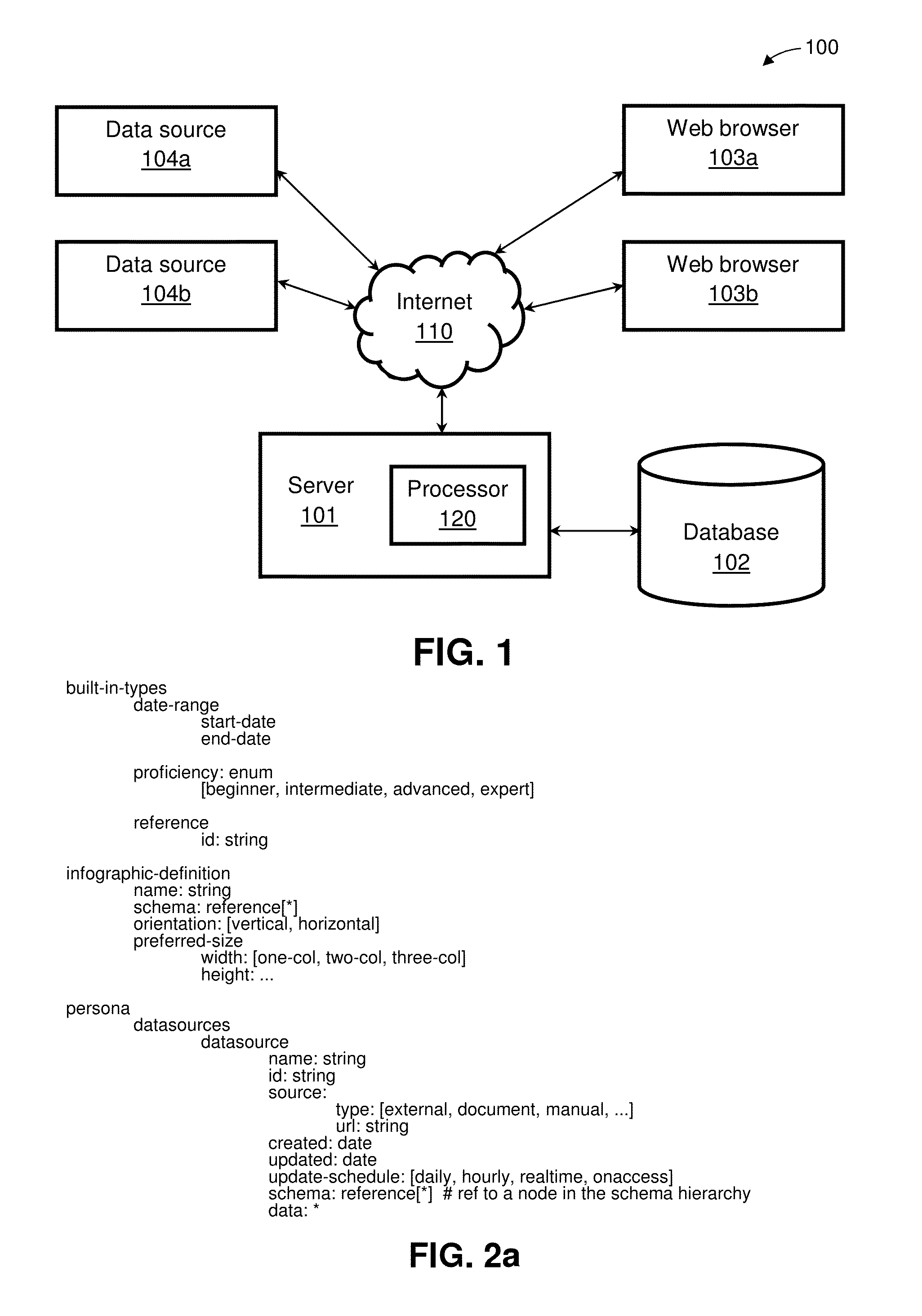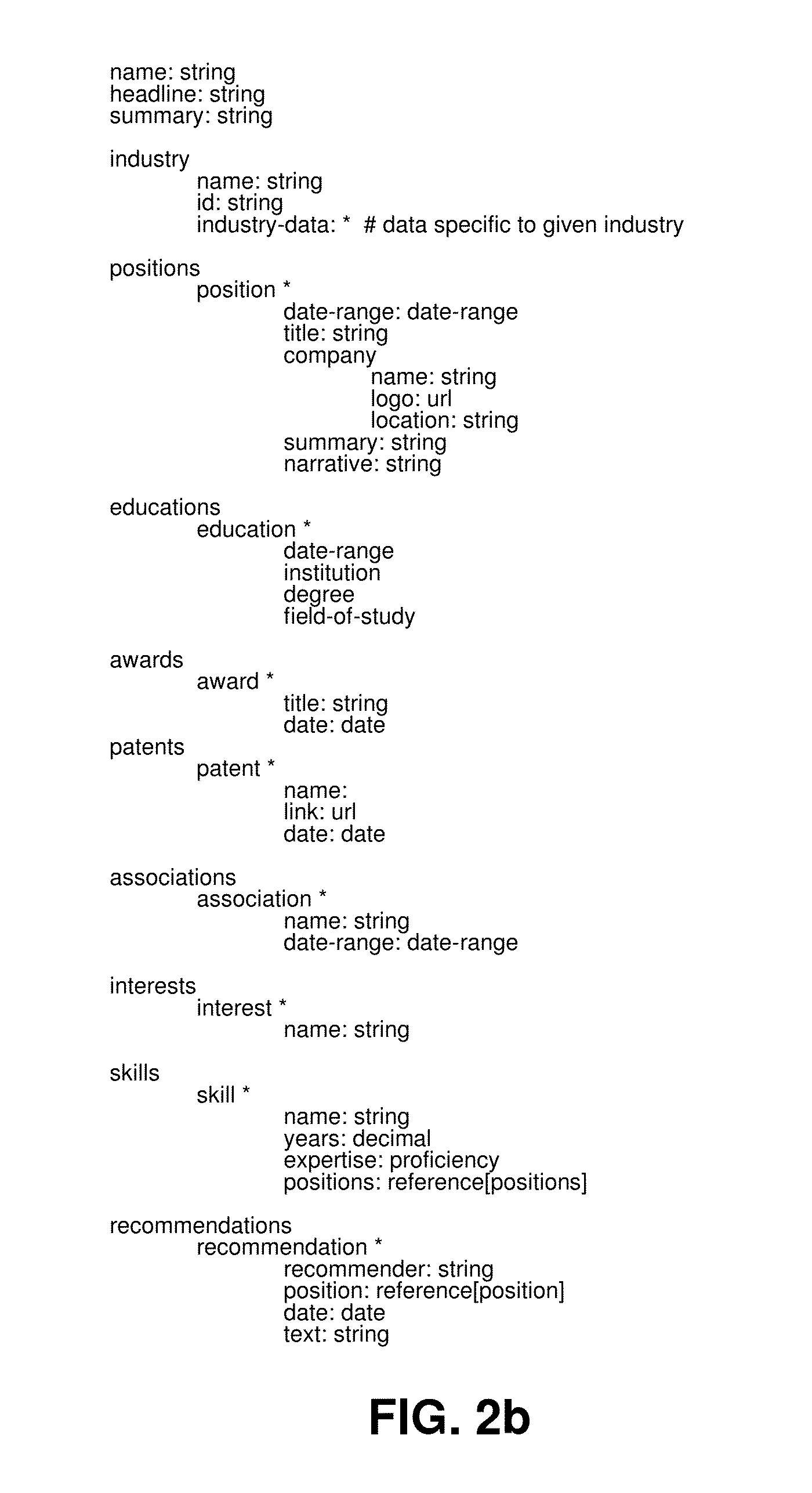Automated presentation of information using infographics
an infographic and automatic technology, applied in the field of data display, can solve the problems of many professionals who lack the ability to produce attractive graphics on their own, let alone infographics, and do not employ infographics to present their professional résumé or profile, and convey information about their accomplishments, skills, capabilities, services, or effectiveness
- Summary
- Abstract
- Description
- Claims
- Application Information
AI Technical Summary
Benefits of technology
Problems solved by technology
Method used
Image
Examples
example 1
[0385]
skills: skill: name: “Poetry” skill: name: “Drawing” skill: name: “Rock Climbing”
[0386]In Example 1, the system recognizes that only names are present and determines on that basis that an optimal renderer (i.e., infographic definition) to use is the renderer that results in a display such as Case 1 of FIG. 44.
[0387]In Example 2 below, the user subsequently fills in additional data representing his or her expertise level, resulting in the following data set:
example 2
[0388]
skills: skill: name: “Poetry” expertise: expert skill: name: “Drawing” expertise: intermediate skill: name: “Rock Climbing” expertise: beginner
[0389]In Example 2, the system recognizes that an optimal renderer to use is the renderer that results in a display such as Case 2 of FIG. 44. In general, as more data is gathered from the user or from external sources, the system will evaluate the data that is available and choose the an optimal renderer for the data at any time, which could result in visualizations such as those shown in Cases 2-6 of FIG. 44.
[0390]In a first embodiment, the system chooses an optimal renderer using an algorithm that chooses the lowest-common-denominator renderer for the entire set of skills based on the particular skill having the least amount of corresponding data, as shown in the exemplary pseudocode below:
if all_skills_contain([name, expertise, category,typical_time_to_mastery, years_used]) return rendererFelse ...
example 3
[0492]
skills: skill: name: “Poetry” skill: name: “Drawing” expertise: beginner skill: name: “Rock Climbing” expertise: beginner category: play skill: name: “Java” expertise: intermediate category: work
Even though the above skill set involves data having varying degrees of completeness for each skill, the system chooses an optimal renderer for each skill so as to generate a single “mixed-rendering” infographic composed of a plurality of individually-rendered infographics. For example, the skill “Poetry” does not include a level of expertise, as in the case of the skills “Drawing,”“Rock Climbing,” and “Java.” Accordingly, the skill “Poetry,” appears in a rectangle because that skill is displayed using a different renderer from the skills “Drawing,”“Rock Climbing,” and “Java,” which appear using circles and triangles to indicate beginner and intermediate levels of expertise, respectively. Similarly, the skills “Poetry” and “Drawing” ...
PUM
 Login to View More
Login to View More Abstract
Description
Claims
Application Information
 Login to View More
Login to View More - R&D
- Intellectual Property
- Life Sciences
- Materials
- Tech Scout
- Unparalleled Data Quality
- Higher Quality Content
- 60% Fewer Hallucinations
Browse by: Latest US Patents, China's latest patents, Technical Efficacy Thesaurus, Application Domain, Technology Topic, Popular Technical Reports.
© 2025 PatSnap. All rights reserved.Legal|Privacy policy|Modern Slavery Act Transparency Statement|Sitemap|About US| Contact US: help@patsnap.com



